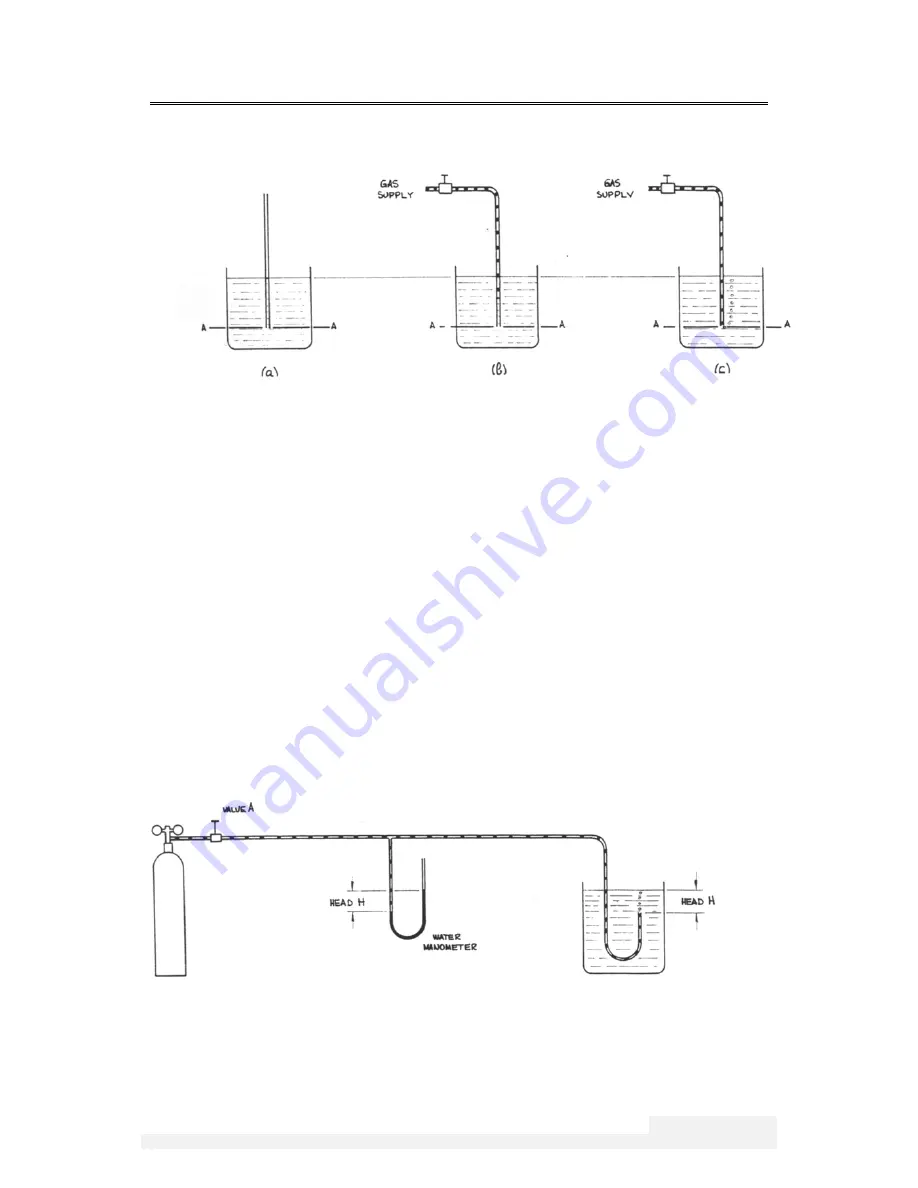
HYDROLOGICAL SERVICES PTY LTD
_______________________________________________________________________________________
Fig.3
(ii
If a tube is immersed in a liquid, it can be seen that the pressure at the bottom of the tube
is that exerted by the head of liquid above it.
(ii
If we connect a gas supply to the tube, the gas will act on the surface of the liquid in the
tube and tend to force it down. Assuming there is no change in level, the pressure at the
end of the tube must be still the same.
(ii
If we increase the pressure so that the gas can push out all the liquid against pressure
level A, then it follows that the pressure at A will be the back pressure in the system.
Also the pressure of each bubble of gas as it emerges from the end of the tube will a that
point have an internal pressure equal to the head, and this internal pressure reduces until
the bubble emerges at the surface at atmospheric pressure.
Therefore the gas acts like a plunger to keep the water out of the tube and in effect, precisely
balances the head of water that would naturally occur if the tube was opened to atmospheric
pressure.
In other words, the system pressure (back-pressure) is supporting a column of water, equal to
the pressure head. Hence, any pressure measuring device, if connected to the pressure system
will record the pressure head over the tube outlet (orifice).
Fig. 4 depicts a water manometer connected to the system and it is recommended that such an
arrangement be set up in a workshop for staff training.
Gas Purge Compressor
Issue 7:
16/12/03
© Copyright
HS55 110-016





































